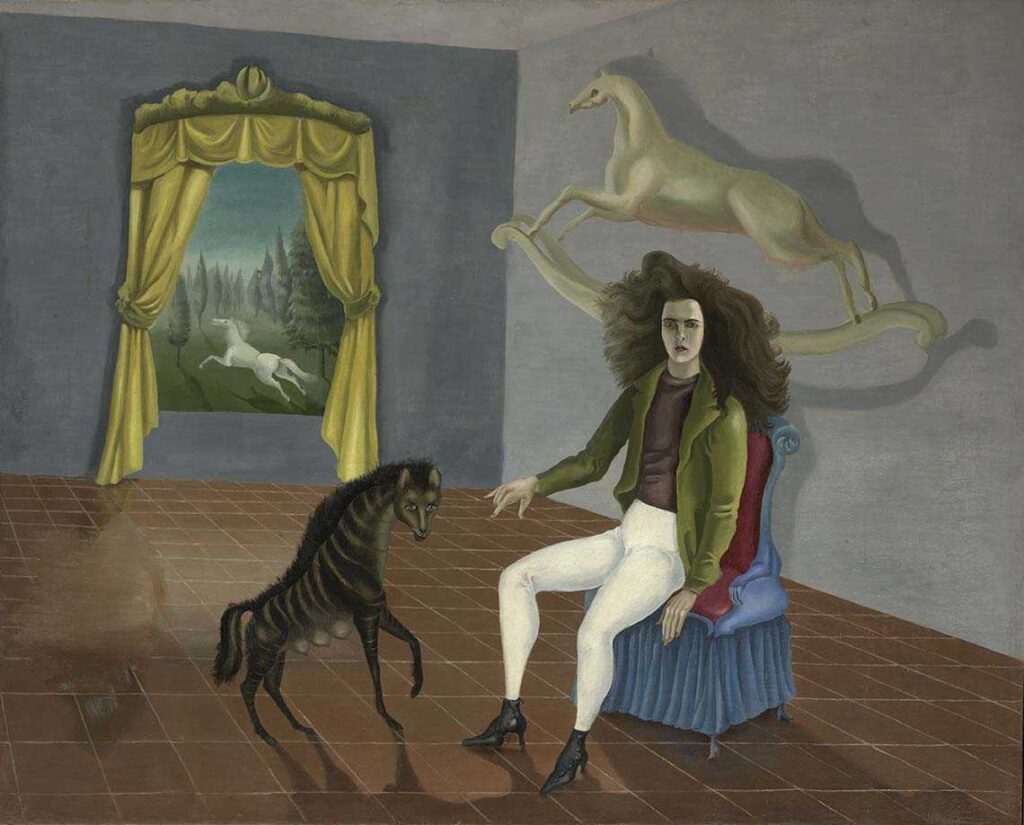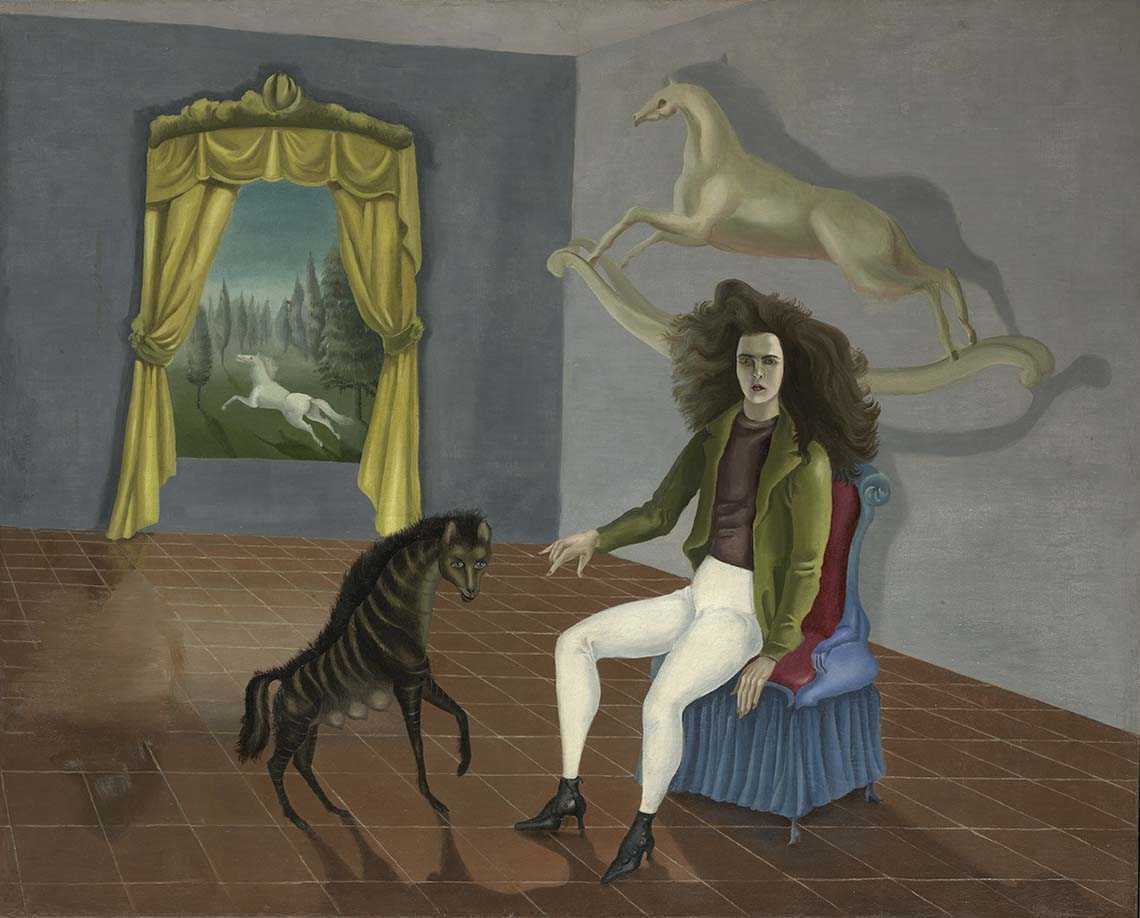24 March 2022
Surrealism Beyond Borders
Tate Modern (24 Feb – 29 Aug)
By William Morton

Surrealism at its simplest can be described as picturing together objects not associated in the rational world with a view to triggering a different view of things and bring out the role of the sub-conscious. André Breton, the French poet and high priest of the movement, called it ‘a derangement of the senses’.
The movement spread rapidly with groups being formed in many countries and took root in America, the Caribbean and Mexico following the arrival of refugees from the Spanish Civil War and World War II. True to it title, the Exhibition devotes space to surrealist groups outside Europe such as one formed in Egypt in as late as 1938. This did have an anti-British agenda and the Exhibition notes make out a case that the whole movement was anti-colonial. However, it is not obvious that it had any such policy generally, although many of its adherents were republicans and liberals.
One of the artists who fled Europe and was influential in spreading the surrealist gospel was the Spaniard Eugenio Granell who moved to the Dominican Republic and then Guatemala and finally Puerto Rico. I found his paintings uninspiring. Similarly, the works of the American poet and musician Ted Joans (including cutting the heads out of photos and a nine metre drawing, Long Distance, to which people were invited to contribute) did not strike me as impressive.
Turning to other artists, the question is whether there is anything more to their work than the surprise of the unusual. Dali’s well-known Lobster Telephone is really just a bit of fun. Another well-known work, Magritte’s Time Transfixed, showing a steam engine emerging from a fireplace, is an attractive painting but is it much more? Leonora Carrington’s Self Portrait of herself sitting on a chair in jodhpurs with a hyena beside her and a white horse galloping among trees visible though an open door certainly has a dream-like quality but it is difficult to read much else into it. However, there are works in the exhibition with more impact such as the slightly sinister Towards the Tower by Carrington’s friend, Remedios Varo, showing a procession headed by a man who is followed by a nun who leads a group of girls in long robes, all of them on bicycles which are not quite bicycles and riding away from a turreted building. Then there is the striking Last Voyage of Captain Cook by Roland Penrose in which the torso of a woman is enclosed within a metal cage in the shape of the globe which does give something to think about. Why is the woman caged? Is there any significance in the reference to the last voyage? I also enjoyed the film The Land in which a girl on a beach suddenly finds herself crawling up a table at which men are enjoying a formal dinner.
To sum up, there is much to enjoy in this Exhibition but it does not dispel the suspicion that Surrealist works can sometimes be trickery without substance.


